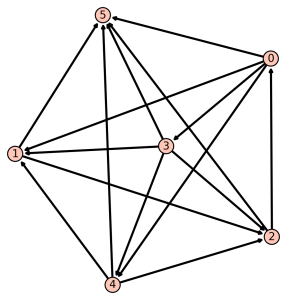This is the fourth of a series of expository posts on matrix-theoretic sports ranking methods. This post discusses the Elo rating.
This system was originally developed by Arpad Elo (Elo (1903-1992) was a physics professor at Marquette University in Milwaukee and a chess master, eight-time winner of the Wisconsin State Chess Championships.) Originally, it was developed for rating chess players in the 1950s and 1960s. Now it is used for table tennis, basketball, and other sports.
We use the following version of his rating system.
As above, assume all the $n$ teams play each other (ties allowed)
and let $latex r_i$ denote the rating of Team $latex i$, $latex i=1,2,dots,n$.
Let $latex A=(A_{ij})$ denote an $ntimes n$ matrix of score results:
$latex
A_{ij}=
left{
begin{array}{rr}
-1,& {rm if team } i {rm lost to team } j,
+1,& {rm if team } i {rm beat team } j,
0…
View original post 294 more words

 Win-loss digraph of the Patriot league mens baseball from 2015
Win-loss digraph of the Patriot league mens baseball from 2015